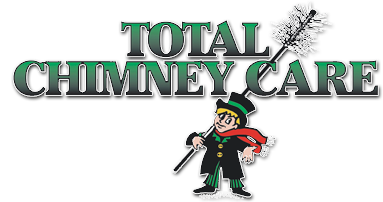Fireplaces and chimneys result in more than 22,000 home fires, on average, each year, according to statistics from the Chimney Safety Institute of America. More often than not, a dirty chimney is to blame for a chimney fire. To avoid becoming another statistic, and to reduce the fire hazard in your home, have your chimney swept and inspected before you use your fireplace this fall.
Dirty Chimneys Spark Fires
Every time you burn a fire in your fireplace, creosote builds up within the chimney. As smoke travels up the chimney and cools, condensation forms on the walls of your chimney flue and then hardens into creosote. Creosote is a flammable substance, which means that if a burning ember makes its way into your chimney. If the temperature within the chimney suddenly spikes, the creosote can ignite and start a chimney fire. The longer creosote remains within the chimney, the more it builds up. Creosote can even boil and bubble, forming a layer several inches thick that can ignite or prevent smoke and carbon monoxide from exiting your chimney.
Your annual chimney sweeping removes creosote from your chimney flue before it can pose a danger. To lower your risk of a chimney fire, the National Fire Protection Association calls for having your chimney swept and inspected at least once per year, between fire-burning seasons. If you burn an excessive amount of wood each season — think four cords or more — you should have your chimney swept more often.
Why Your Chimney Inspection Matters
Your annual chimney sweeping isn’t just about removing hazardous creosote from your chimney flue. It should also include an inspection. Your annual inspection spots any problems in your chimney or fireplace that could pose a fire hazard. Cracks or weaknesses in the chimney liner can let the heat, smoke, and fire from your chimney to access the wooden structure of your home, which can lead to a fire. Your inspection also will spot any signs of a previous chimney fire. Often, an initial chimney fire smolders and goes undetected. It does, however, damage the chimney, opening the door for a second, more severe chimney fire that can spread to the rest of your home.
If you have gas logs or a gas fireplace insert, your chimney sweeping and inspection is still important to prevent a house fire! The sweeping removes corrosive soot from the chimney and dust or debris from the burners and blowers in your fireplace. The inspection verifies that the chimney is in good condition and that all working components of the fireplace or logs are operating properly and safe for use.
Schedule Your Chimney Maintenace Now!
If you haven’t had your chimney swept and inspected yet this fall, don’t wait any longer! You should not light your fireplace for the season before the entire system has been swept and inspected. Doing so puts your home and your family at risk of a dangerous house fire! Reduce your risk of a chimney fire by calling Total Chimney Care to schedule your annual chimney sweeping and inspection today.
